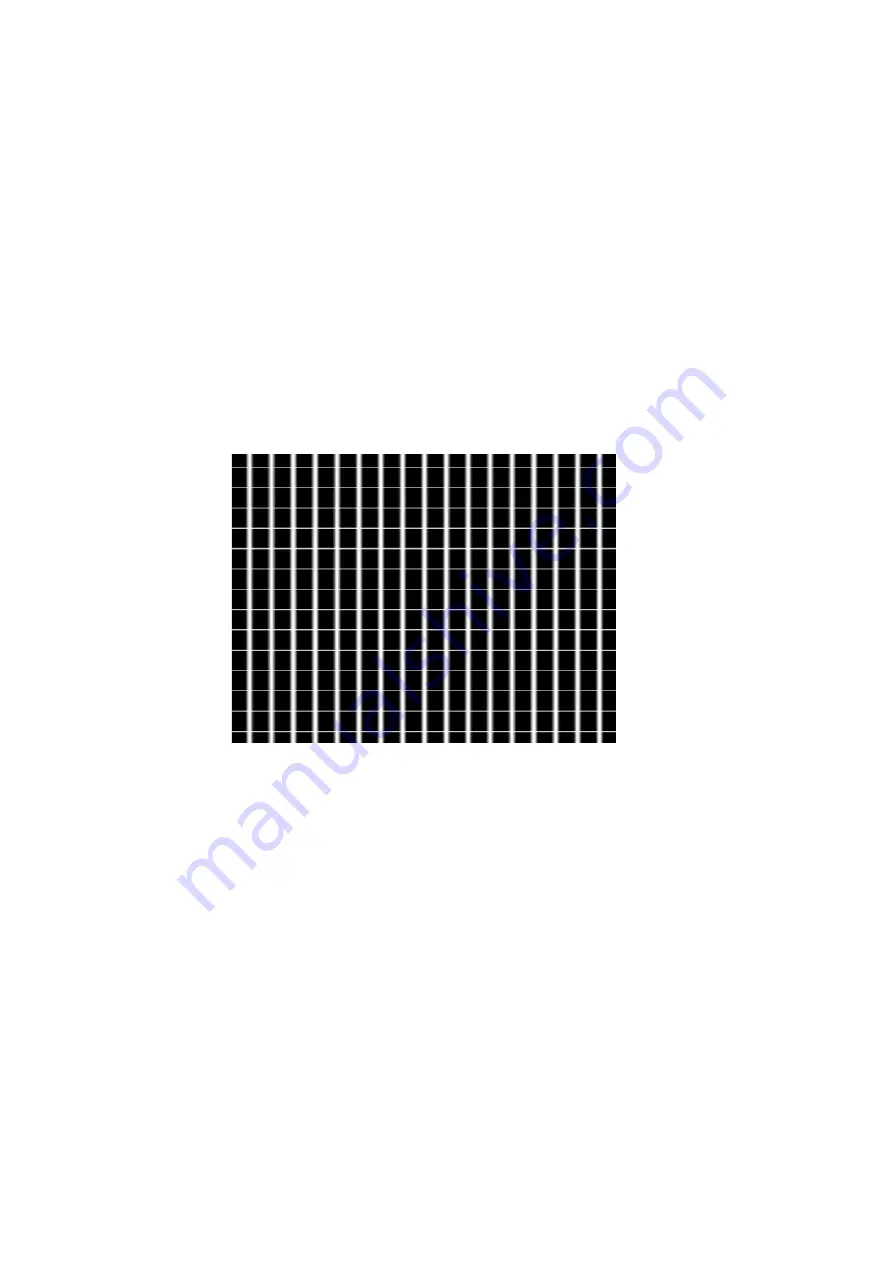
882 Video Test Instrument User Guide
(Rev A.35)
653
Purpose
This general purpose pattern can be used to check the video handling capabilities of most
parts of a television system.
Method
When viewed on a TV screen, all of the colors should be correct and in the order shown.
The hue and intensity of each bar should be uniform over the entire bar.
The image can be used with a TV waveform analyzer to check the performance of a video
system. Individual scan lines of each image, as they would appear on a waveform
analyzer, are shown on the following page.
The image is quite effective when used with a TV vectorscope to see how a video system
handles an encoded color signal.The image consists of a white crosshatch on a black
background. The lines form square boxes when the display’s active video area has a 4:3
aspect ratio. The vertical lines are made using sine-squared (2 T) pulses (T = 125 nSec for
NTSC and T = 100 nSec for PAL).
Test
Convergence adjustment
Purpose
To accurately produce an image on a color monitor, the three electron beams in the CRT
must meet (converge) at the same location at the same time. Lines displayed on a
mis-converged monitor will appear as several multi-colored lines, and the transitions
between different colored areas will contain “fringes” of other colors.
Method
The convergence adjustments of most color monitors can be divided into two main
categories. The first set of adjustments, usually called “Static Convergence,” calls for
aligning the three beams in the center of the display. This method involves turning on all
three guns and adjusting the various magnets on the convergence assembly to produce
all white lines and dots in the center of the display. The convergence assembly is located
on the neck of the CRT. Different monitors and CRT types may each require their own
magnet adjustment sequence.
Summary of Contents for 881
Page 1: ...881 882 Video Test Instrument User Guide 882E for HDMI ...
Page 12: ...10 Contents ...
Page 50: ...38 Chapter 1 Getting Started ...
Page 84: ...72 Chapter 2 Testing Video Displays ...
Page 99: ...882 Video Test Instrument User Guide Rev A 35 87 ...
Page 102: ...90 Chapter 3 Administrative Tasks ...
Page 107: ...882 Video Test Instrument User Guide Rev A 35 95 ...
Page 216: ...204 Chapter 5 Working with Formats ...
Page 248: ...236 Chapter 7 Working with Images ...
Page 264: ...252 Chapter 8 Working with Test Sequences ...
Page 382: ...40 Chapter 11 Testing EDID for HDMI 2 Expand the EDID Block in the navigation view ...
Page 446: ...104 Chapter 12 CEC Interactive Troubleshooting Environment ITE ...
Page 493: ...882 Video Test Instrument User Guide Rev A 35 151 ...
Page 591: ...882 Video Test Instrument User Guide Rev A 35 213 Commands by name ...
Page 687: ...882 Video Test Instrument User Guide Rev A 35 309 Example DVIC 23 FMTU ...
Page 1018: ...580 Appendix B Image Reference The EMITest5 image is shown below ...
Page 1094: ...656 Appendix B Image Reference ...
Page 1124: ...686 Appendix C Error Messages ...
Page 1140: ...702 Appendix D Format Reference ...
















































